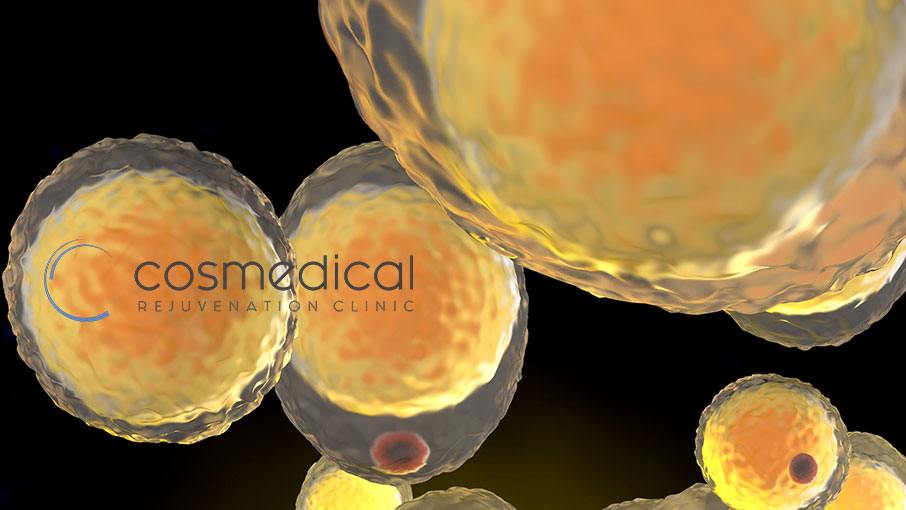
An Overview of Fat
Fat cells are our storage sites for the energy we get from food. When we eat, our bodies break down some of the food and use it immediately to fuel energy in the form of calories. Anything that’s left over gets stored in fat cells as triglycerides, which later can be broken down and used as energy when needed.
There are two types of fat in your body: brown and white fat. However, both serve the same purpose, which is to store energy. The difference between the two types lies in how they store energy and how easily they burn energy (thermogenesis). White fat stores energy, while brown fat produces heat to warm the body, especially during sleep or hibernation.
Fat cells are found in all parts of the body: around your organs, between muscles, around bones, and in skin folds. But why are they there at all? And what purpose do they serve?
Our body is composed of billions of different types of cells. However, only one type of cell, called an adipocyte, can store fat. Adipocytes (fat cells) are similar to other cells in that they are made up of proteins and DNA, which contains genes that determine what makes a cell unique. However, unlike other cells in our bodies, the job of adipocytes is to synthesize triglycerides and store them as adipose tissue.
Fat cells are soft blobs of fat made up of a combination of lipids (fats) and proteins (proteins). The protein portion is called a membrane, and it acts as a barrier that controls how much fat enters or leaves a cell. The primary role of fat cells is to store energy. In fact, every pound of stored fat has about 4089 calories of energy!
Fat cells also serve to cushion your organs and promote healthy bone growth and wound healing.
As soon as you’re born, your genes decide how much of your total body weight will be stored in each area. If your parents have a pear shape (more weight on hips and thighs), for example, chances are you will too.
Aging and Fat
Aging impacts the amount of fat we store as muscle loss occurs. Muscle loss related to aging is known as sarcopenia, a natural condition that tends to accelerate when we’re in our 30s. While muscle tissue cannot turn into fat, as they’re totally different tissues, the ability to expand fat stores becomes easier with the muscle atrophy and slowing metabolism that aging causes.
Studies have shown that fat stores increase from your 30s and beyond — it’s not uncommon for older people to have 1/3 more fat on their body when compared to how they were in their youth.
Where most people store excess fat
Fat tends to increase in the middle of your body. The hips, thighs, and stomachs are common areas where people store fat. This fat may be visceral or intra-abdominal, which means it surrounds your internal organs and can lead to diabetes, heart disease, fatty liver disease, and other severe conditions.
Below your skin lies a layer of fat. This is called subcutaneous fat, also known as hypodermic. Some of your weight is made up of essential, healthy subcutaneous fats.
If you want to lose weight and sculpt your body, you need to destroy or permanently remove fat cells, so they are no longer able to affect your body shape. Options for fat removal include tummy tuck, liposuction and SculpSure